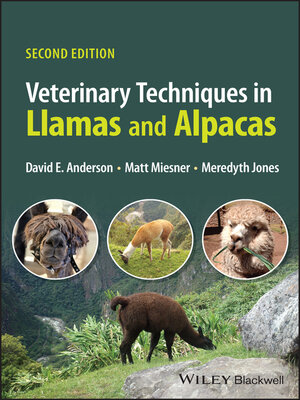
Sign up to save your library
With an OverDrive account, you can save your favorite libraries for at-a-glance information about availability. Find out more about OverDrive accounts.
Find this title in Libby, the library reading app by OverDrive.



Search for a digital library with this title
Title found at these libraries:
| Loading... |
Practical resource for how-to information on performing hands-on procedures in llamas and alpacas, with step-by-step descriptions, photographs, and practice tips.
Thoroughly revised to reflect new techniques, knowledge, and research, the Second Edition of Veterinary Techniques in Llamas and Alpacas provides practical step-by-step descriptions of techniques ranging from routine to not-so-common, helping veterinarians to confidently handle and perform common medical and surgical procedures in llamas and alpacas. To aid in practical application, hundreds of high-quality color photographs demonstrate the steps for each technique, making it a useful patient-side resource. Organized by body system, the book encompasses techniques associated with the physical exam, anesthesia, ultrasound, surgery, and more.
Veterinary Techniques in Llamas and Alpacas presents a wide range of techniques, including:
The Second Edition of Veterinary Techniques in Llamas and Alpacas is an essential resource for veterinary practitioners with a camelid caseload, with accessible information and detailed picture-based tutorials on how to perform key procedures.






